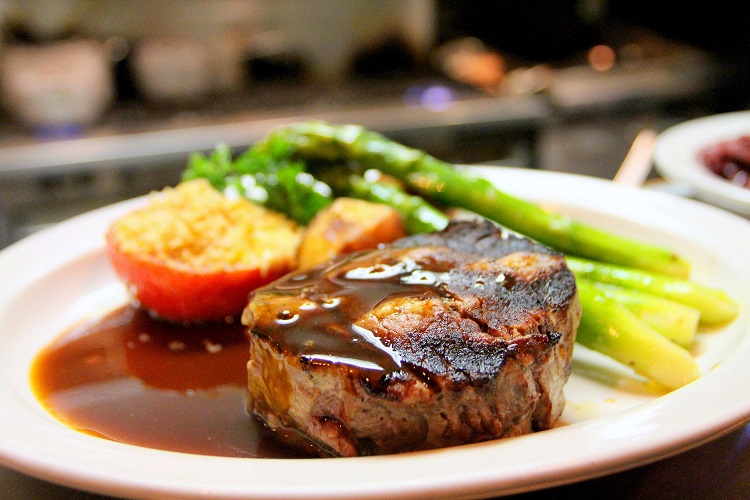Over the last few weeks, we have talked at great length about four of the five classic French mother sauces. We have covered tomato sauce, béchamel, velouté, and hollandaise. We have covered what they are, how to make them and different sauces you can make from them.
Today, in our fifth and final entry of the classic mother sauce series we are looking at Espagnole. Just like with the other mother sauces we will be looking at what it is, how to make it, how to use it, and other sauces that can be made from it.
Of all the five mother sauces Espagnole maybe the most important. It absolutely has the most derivative sauces of all the mothers. More importantly, it is by far the most versatile of all the mother sauces.
Now, you may have never heard of Espagnole before. That’s fine. My guess is that you have likely eaten it. Possibly made it. And by the time you’re done reading this post you will understand why for my money I think it’s the most important of all the classic mother sauces.
What is Espagnole?
Sometimes referred to as brown sauce, Espagnole is made by bolstering the flavour of a brown stock and thickening it. We’ll get into that more later.
If you have never heard of Espagnole sauce don’t beat yourself up. Unlike it’s more common mothers, Espagnole isn’t generally used on it’s own. What you likely have heard of is Demi Glace or demi for short.
Demi
Demi is traditionally made by combining equal parts Espagnole and brown stock and reducing the volume by half through simmering. Demi literally means half in French. Glace can mean a lot of things but in this context it means glaze. So demi glace means half glaze. Make sense?
Very often what you will find labelled as demi glace on menus is actually just Espagnole. Even if the sauce isn’t a true Espagnole it is generally brown stock bolstered and thickend through reduction rather than a roux. It would almost be like a hybrid between Espagnole and Demi Glace.
Today, a brown sauce can be a lot of things. It can be the classic espagnole that we’re talking about. It can be demi glace. The term can even cover pan sauces which I’ll get into later.
Making Brown Stock
Espagnole maybe be the mother sauce but brown stock is where it all starts.
Brown stock is made by roasting veal or beef bones until they get a rich, deep brown colour. Then simmering the bones with heavily roasted onions, carrots, and celery. Often flavourings like parsley stems and bay leaves will be added as well.
All of this is slowly cooked together for an extended period of time. At least 2-3 hours but in can be much longer depending on the size of the bones. The idea is to extract as much flavour and gelatin from the bones as possible.
After the stock has reached its peek flavour the solids are strained out and the liquid is left to cool in the fridge over night. In the morning there will be a layer of fat on the surface of the stock which is skimmed off. This leaves only the rich brown stock remaining.
This brown stock can be used to make Espagnole and demi. It can also be used as the base of soups, braises, and pan sauces or to cook rice, potatoes, or vegetables.

Making Espagnole
To make Espagnole we essentially repeat the the process of simmering and adding flavour. The difference is that this time we don’t use bones. Generally, meat trim will be roasted and added to the stock to add a more intense meat flavour.
Other ingredients that will generally be added to bolster the beef stock into Espagnole are more roasted vegetables like onions, carrots, and celery. Mushrooms are also generally added, as is tomato paste. It is also common to add red wine, port, or sherry.
After the stock has been simmered with the roasted vegetables and meat trim it is once again strained to remove the solids. To the remaining liquid a roux (equal parts butter and flour mixed together) is added to thicken the sauce.
Pan Sauces
A pan sauce is exactly what it sounds like. It is a sauce made in the pan that a piece of meat was cooked in. So, if you sear a steak in a pan, you can use that pan along with any stuck bits on the bottom of it to make a sauce.
To make a pan sauce remove the protein from the pan. Pour off any excess oil. Add 1-2 tbsp of butter and 1-2 tbsp chopped shallot or onion. Cook the shallot or onion until it starts to turn translucent. Deglaze the pan with red wine, port, or sherry and reduce by half. Now add a bit of Espagnole, or beef stock. Reduce. Adjust seasoning, and if desired add a touch of cream.
Derivative Sauces
Bigarde: To make the bigarade sauce caramelize sugar and to it add vinegar, orange and lemon juice. Add this to Espagnole and garnish with lemon and orange zest. Serve with duck and other game birds.
Bordelaise: This is red wine, shallots, peppercorns, thyme, and bay leaf simmered together and added to Espagnole. This sauce is finished with a little bit of demi glace, lemon juice, and sliced bone marrow. This sauce works very well with grilled meats and roasted fish.
Bourguignonne: Simmer red wine, shallots, thyme, parsley, bay leaf, and mushrooms together and add to Espagnole. Finish with whole butter and a pinch of cayenne pepper. Serve with eggs or beef.
Robert: The sauce is onions, butter, white wine added to Espagnole. The sauce is finished with a pinch of sugar, and English mustard. Serve it with grilled pork.
Financière: Add Maderia wine and truffle to Espagnole. Serve with beef.
I could honestly go on and on and on as there are loads of sauces made with Espagnole. I think the above list gives you an idea of it’s versatility.
Conclusion
This concludes our five week series on the classic French mother sauces. I hope that you have enjoyed this series but more importantly I hope that you have learned from it.
Like anything, being a good cook is about knowing the fundamentals. Know the basics and you can create incredible things. Now, you can say that you know the five classic French mother sauces. Hopefully, you will even use them.


0 Comments
Trackbacks/Pingbacks